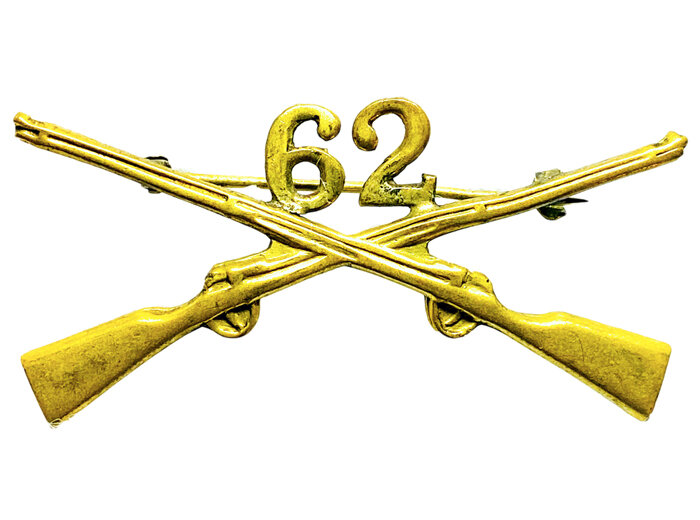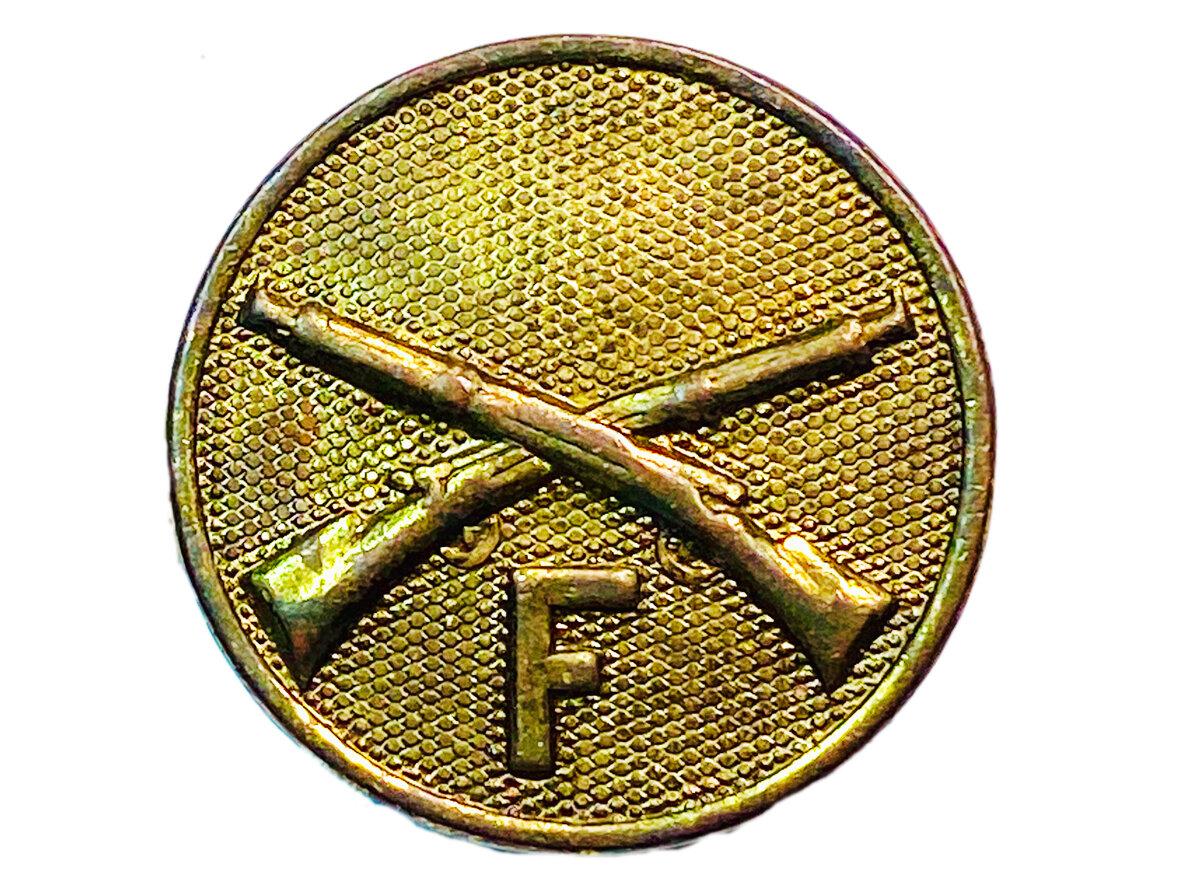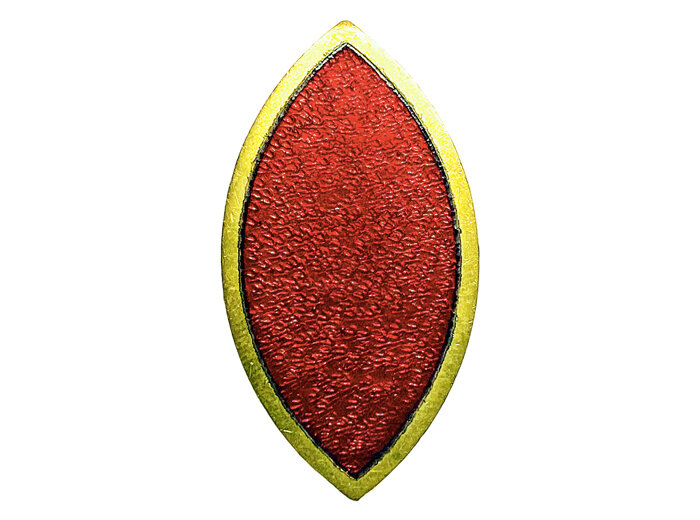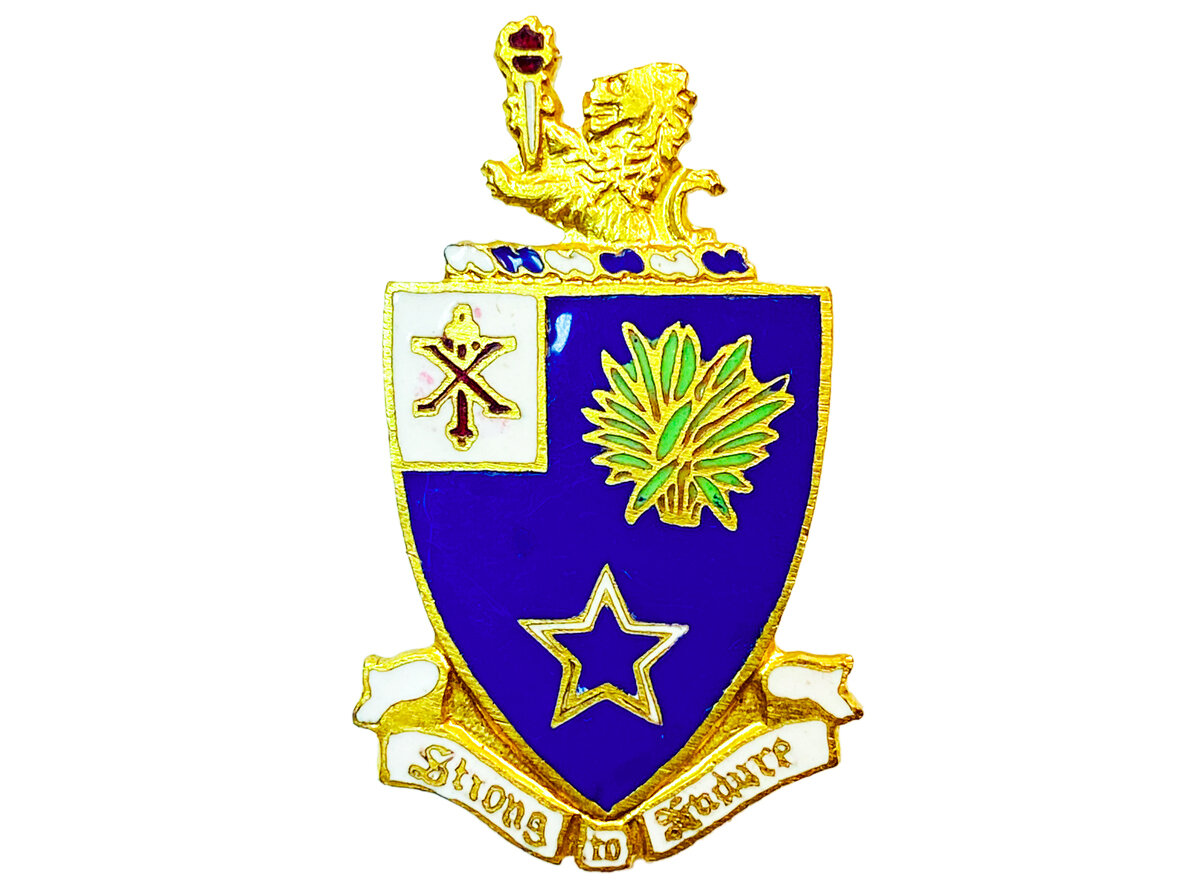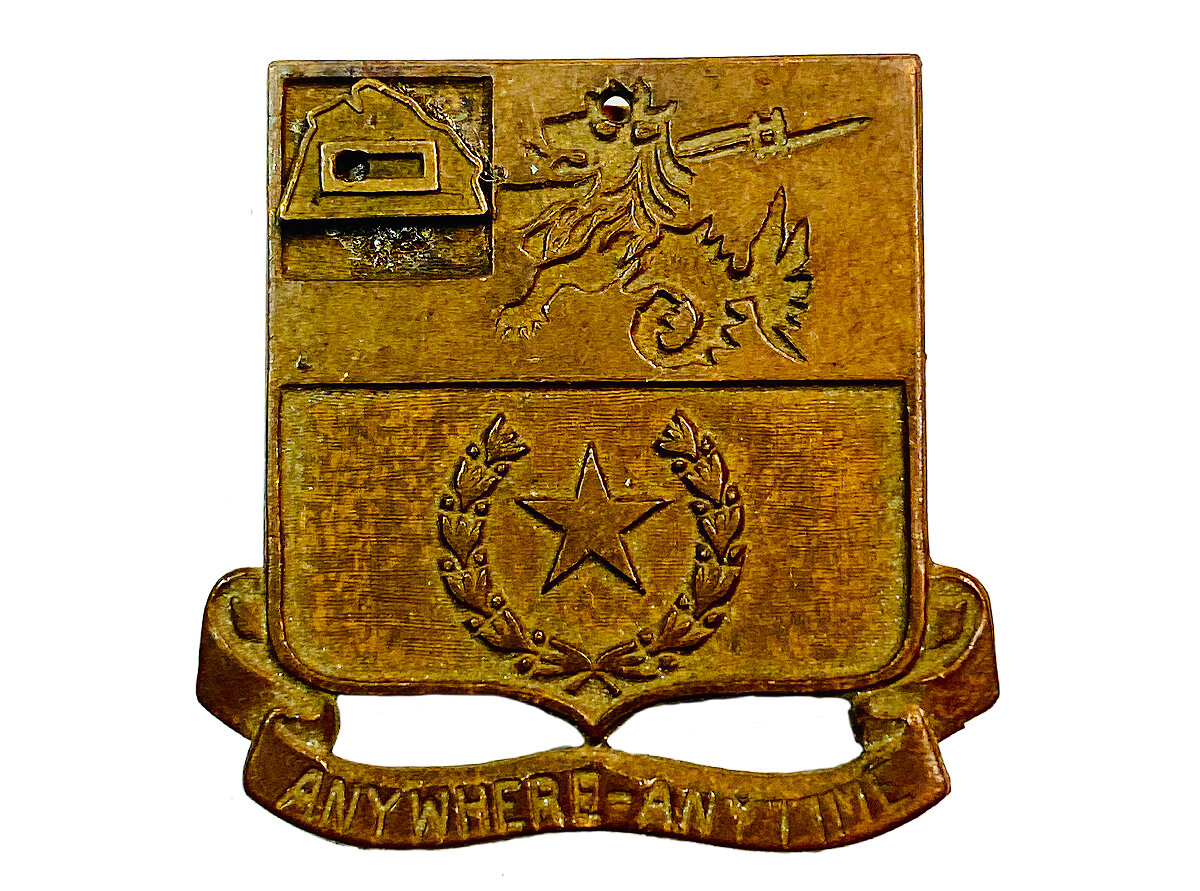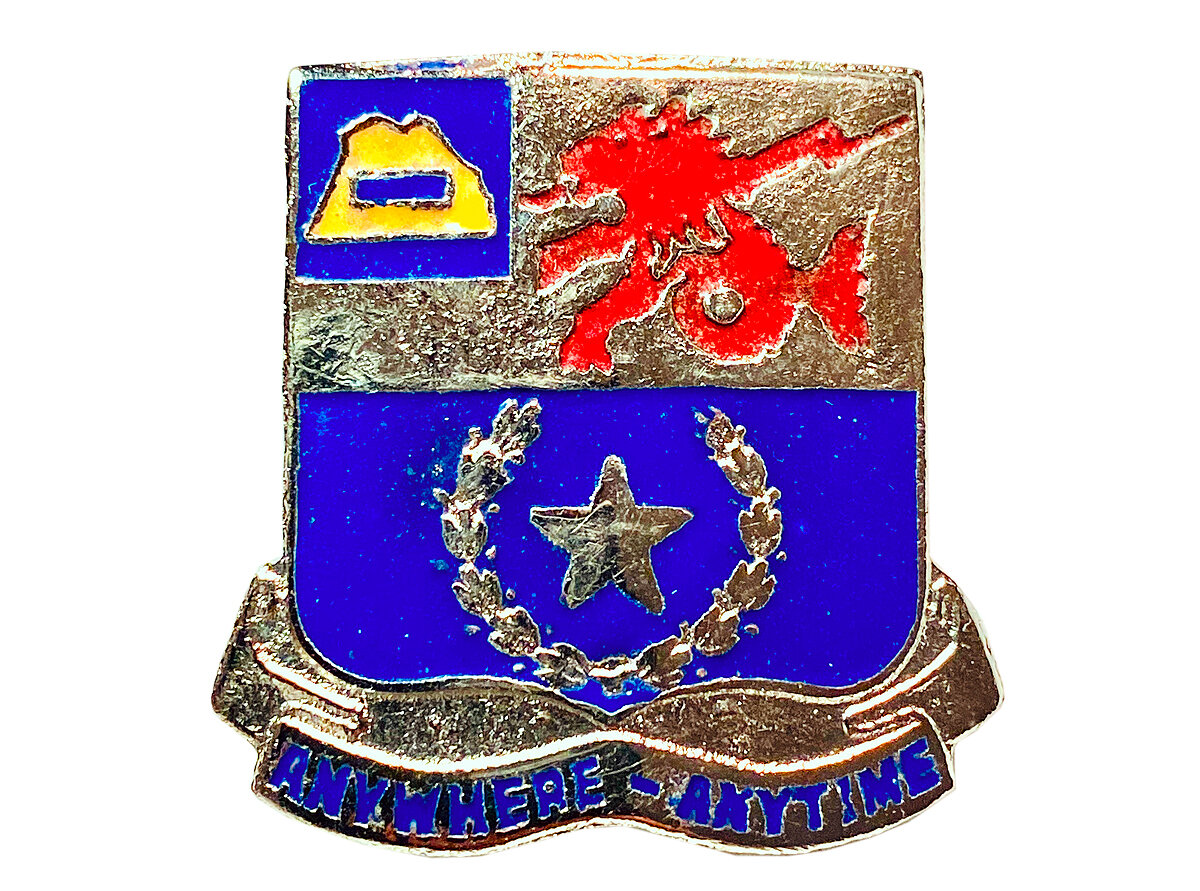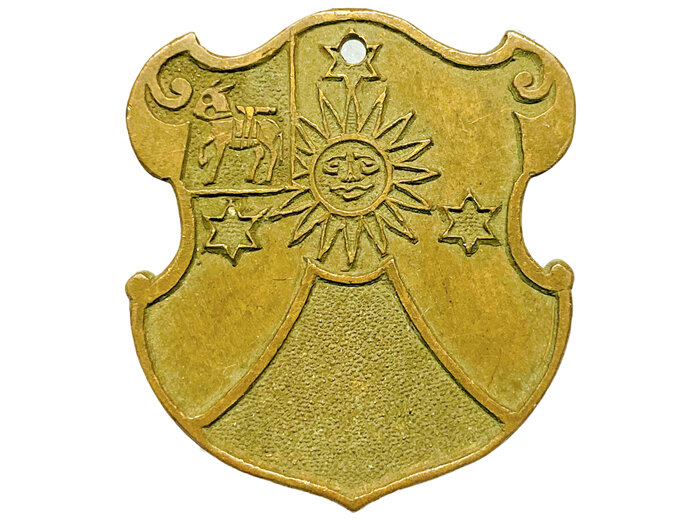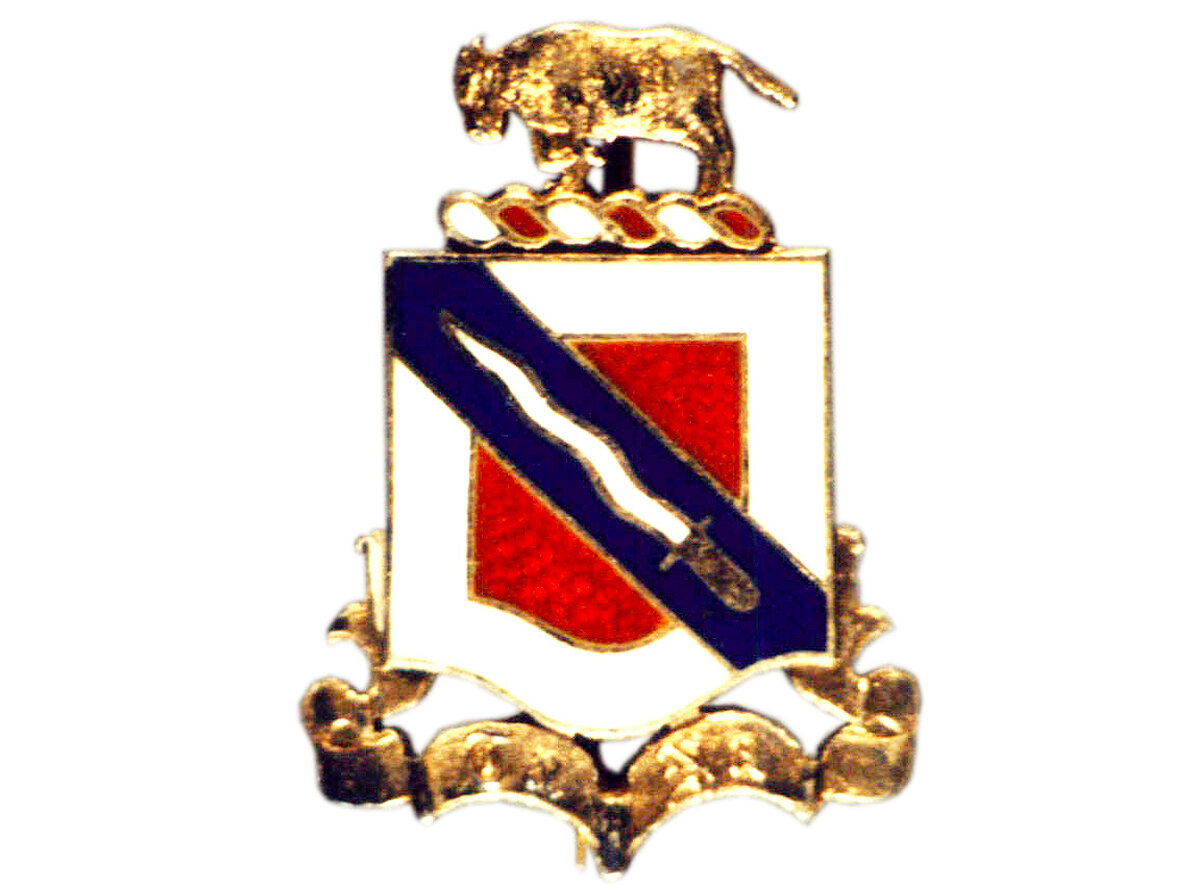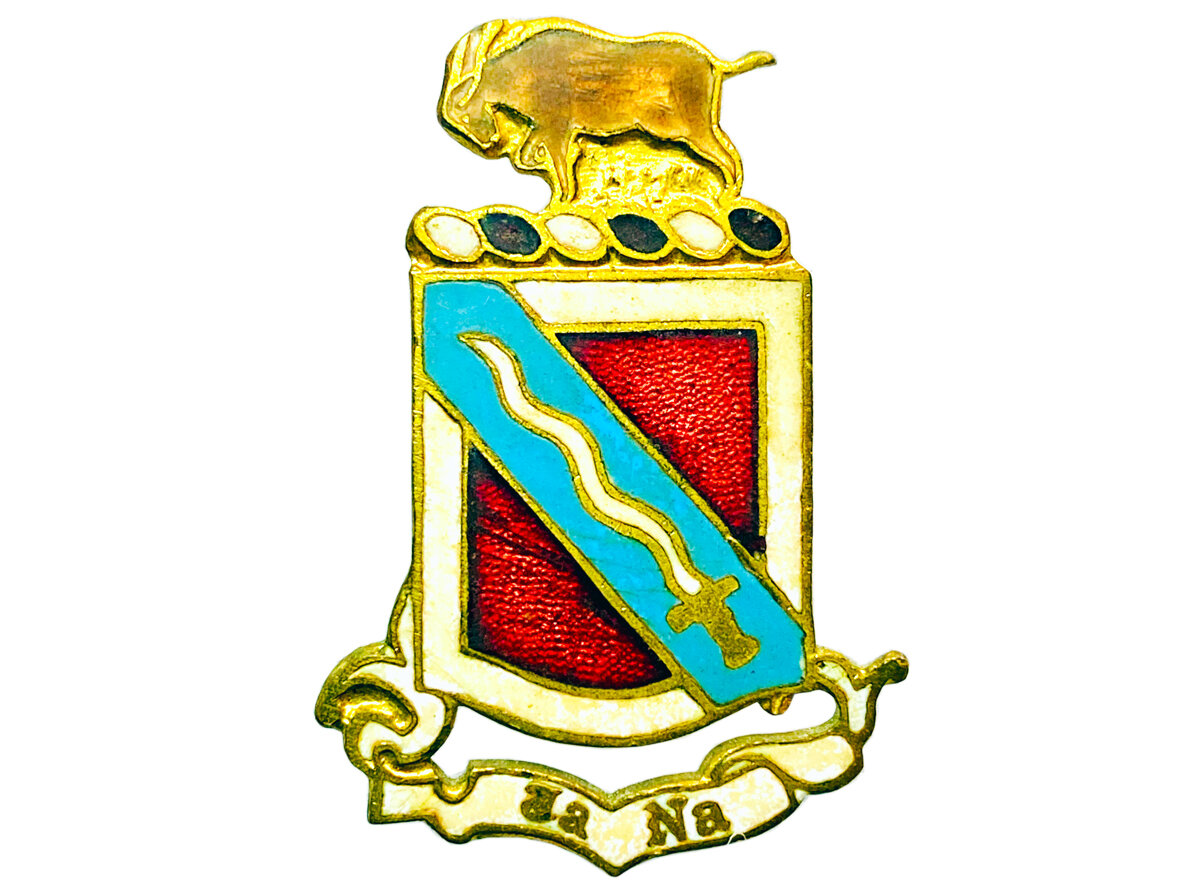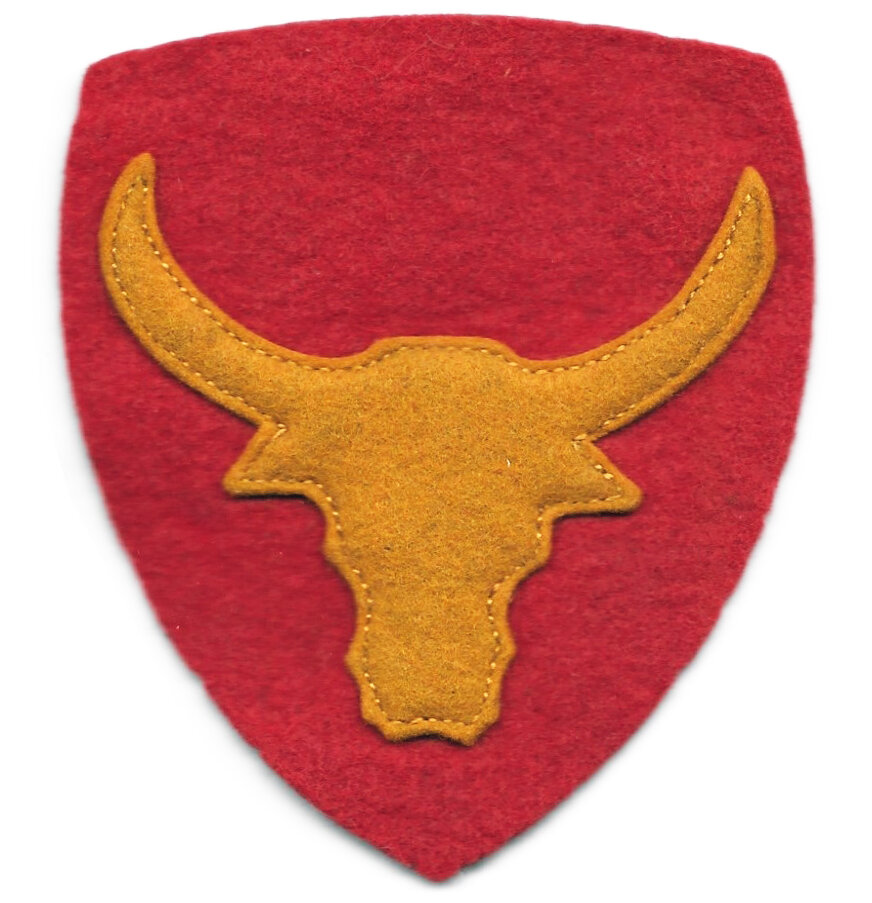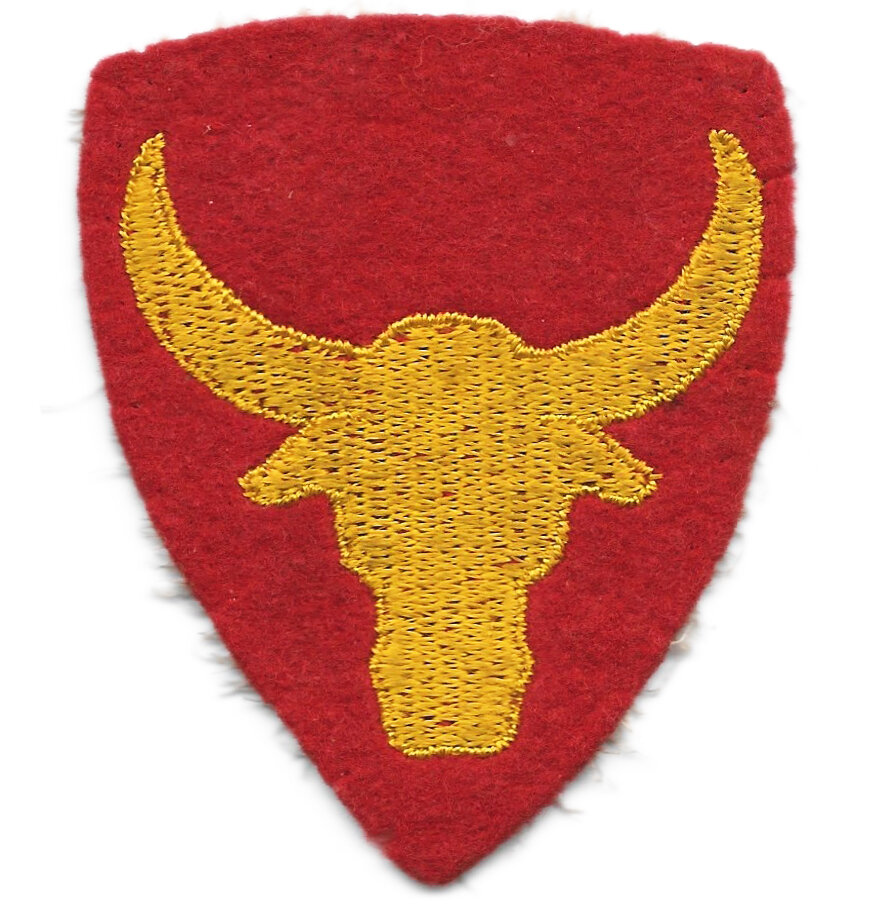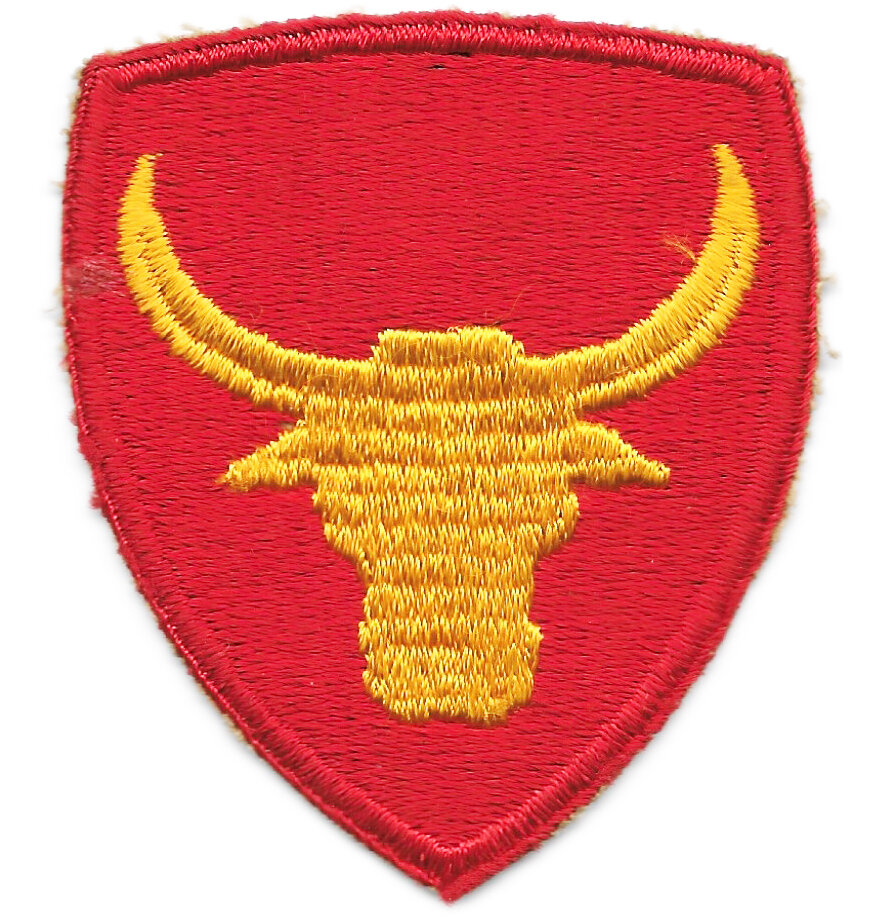Insignia of the Philippine Scouts
By Robert Capistrano
With photos by Sean Conejos
Artillerymen of the 24th Field Artillery (PS) load their gun during practice, 1940. Notice the 24th Field Artillery (PS) distinctive insignia on their campaign hats. (U.S. Signal Corps photo)
Introduction
In the winter and spring of 1941-1942, perhaps the only bright spot countering the bleak news of axis victories was the dogged defense of the Bataan Peninsula by the hard pressed Filipino and American troops of the United States Army Forces Far East (USAFFE). The most celebrated troops of the campaign were the Philippine Scouts, collectively representing only 10% of the defending army. From the rearguard defense of the retreat into Bataan, to the Abucay Line and the Battle of the Points, the Scouts provided the ultimate backstop preventing USAFFE from the quick capitulation experienced in Malaya and Singapore, and the Dutch East Indies. To a great degree, it could also be said that the actions of the Philippine Scouts at Bataan, Corregidor and Mindanao preserved the honor, and the reputation, of the Regular Army of the United States. This article surveys the insignia worn by the soldiers of this remarkable force.
History of the Philippine Scouts
Gilded Officer's Collar Brass for the White Dress Uniform 1901-1918
Bronze Officer's Collar Brass for the Service Uniform 1901-1918
The Philippine Scouts were a component of the Regular Army which had its roots in the urge for empire which captivated the leading powers of Europe — and the United States — in the last quarter of the 19th Century. Formed in October 1901 towards the end of America's campaign to conquer the Philippines, the first companies of Scouts were raised in various provinces of the country to augment the regular and volunteer regiments which were the vanguard of "Manifest Destiny." With the formal close of the Philippine-American War, more and more responsibility for preserving American authority was shifted, first, to the Scouts, and later, in the wake of pacification, to the new Philippine Constabulary.
Despite the formal end to the "Insurrection," sporadic resistance continued in several provinces for over a decade. Scout companies campaigned in Southern Luzon in the early years, were mobilized on Samar in 1906-07 to quell a rebellion whose first volley was the destruction of the 38th Company of Scouts, and assaulted the fortress of Bud Bagsak on Jolo Island in 1913 under the command of Brigadier General John Pershing.
Unlike the Constabulary, formed as a police force reporting to civil authorities, the Philippine Scouts were always a military formation within the US Army. Recruited from Filipinos residing throughout the islands, the majority of its officers were Regular Army officers, originally, soldiers from the disbanded U.S. Volunteer regiments who were granted commissions in the Philippine Scouts. In some ways, the Scouts could be compared to the old Indian Army of the British Raj, building over 40 years of service to the United States, its own traditions, identity, and pride, well reflected in the mottoes adopted by its regiments in the 1920s: "Our Strength is in Loyalty," "Strong to Endure," and "Anywhere, Anytime."
By America's entry into World War I in 1917, 52 companies of Scouts had been formed, including two companies recruited from the Muslims of Mindanao and Sulu whose base of operations was Pettit Barracks, in the town of Zamboanga. Over the years, the separate and far-flung Scout companies concentrated in particular posts and formed into a dozen battalions. In 1917, these battalions were further consolidated to form four provisional regiments, designated the 1st through 4th Philippine Infantry (Provisional), and the 1st Philippine Field Artillery (Provisional). These regiments were in turn formally incorporated into the numerical structure of the Regular Army when, in 1920, they were consolidated (on paper) with several inactivated Regular Army regiments formed during World War I and redesignated the 43rd, 45th, 57th, 62nd Infantry and 24th and 25th Field Artillery (Philippine Scouts). Although the 43rd, 62nd Infantry and 25th Field Artillery (PS) were disbanded in 1922 because of the reduction of the army, several of the battalions were used to form the new 26th Cavalry (PS).
Except for the 26th Cavalry, the existing Scout units — augmented by an infantry brigade consisting of the 1st Battalion, 15th Infantry (the 2nd and 3rd Battalions of which were stationed in Tientsin, China) and 31st Infantry — were organized into the Philippine Division, which included the newly raised Scout 14th Engineer and 12th Medical Regiments, the Philippine Division Quartermaster Train (redesignated the 12th Quartermaster Regiment in 1936), and the 12th Ordnance and 12th Signal Companies.
The last pre-war scout regiments to be raised were the 91st and 92nd Coast Artillery, formed at Fort Mills, Corregidor Island, in 1924. (In 1941, the 1st Battalion, 45th Infantry, with companies based at Camp John Hay, in Baguio, Luzon, and at Pettit Barracks, Zamboanga, were redesignated the 1st Battalion, 43rd Infantry.)
Most of the Scout units were surrendered in stages to the Japanese — at Bataan on April 9, 1942, Corregidor on May 6, 1942, and Mindanao on May 10-12, 1942. However, elements of Troop C, 26th Cavalry, and Companies C and E, 43rd Infantry, all isolated in Northern Luzon, became the core of guerrilla units which continued to resist until the Japanese were expelled in 1945.
The Philippine Division, now redesignated the 12th Infantry Division (PS), was reactivated in 1946, along with its component units, primarily to compensate for the demobilization of American army units. A 44th Infantry Regiment (PS) was also formed for occupation duty on Okinawa. Although many pre-war scouts rejoined these newly reformed units, most soldiers were "New Philippine Scouts," who had not shared the prewar experience. With the independence of the Philippines in July 1946, the continued existence of the Scouts as an American organization became harder to justify. Hence, the 12th Infantry Division was inactivated in 1947, gradually followed by all remaining units. By 1949, the book had closed on the Philippine Scouts.
Scout Insignia
Enlisted Scout Collar Disc (Company number appears below)
In its earliest days, Scout units were distinguished from other elements of the army by the addition of the letter "P" above the crossed rifles of the infantry. With the introduction of collar disc insignia in 1911, enlisted Scouts wore the "P" over crossed rifles, with their company's number below the rifles. Officers apparently were not authorized to wear the battalion or company number under their crossed rifles. Brass rifles were worn only on the officers' white or dress uniforms. Blacked bronze rifles were worn on the khaki field uniform. Enlisted men, who were not issued anything other than khaki tunics, wore only blackened bronze collar discs.
With the redesignation of the Scout units as regiments of the Regular Army, the regimental numerals replaced the former "P." Shown are early (pre-1924) officers' insignia of the 43rd, 45th, 57th and 62nd Infantries, along with enlisted collar discs worn by the 26th Cavalry, 14th Engineers, 57th Infantry, and the 92nd Coast Artillery. Blackened bronze insignia were formally discontinued by 1926, and replaced by the brass insignia shown.
Distinctive Insignia of the Philippine Scouts
In 1922, the army introduced "distinctive insignia" to be worn on the campaign hat and collar of the field uniform. These insignia, generally enameled brass badges which used heraldic imagery to commemorate historic events in the histories of regiments or battalions, were intended to further esprit de corps among the members of the unit. The designs of these insignia were often based on the regimental coats of arms, which began to appear on the regimental colors. Those worn by the Philippine Scouts are shown below.
44th Infantry Regiment (PS)
The 44th was actually a "New Scout" regiment, formed in 1946 and sent to Okinawa until its disbandment in 1948. Shortly before its inactivation, the regiment approved an ordered an insignia consisting of a gold-bordered red oval. Although manufactured, the distinctive insignia was never worn because it arrived too late. However, shoulder patches based on this design were made in the Far East and worn.
45th Infantry Regiment (PS)
This regiment's insignia consisted of an infantry blue shield, on which is a star outlined in white and an abaca tree, and bearing a white canton charged with the badge of the 10th US Infantry. A crest consisting of a gold half-lion holding aloft a torch is above the shield. The pre-Scout 45th was formed in Indiana in 1917 (commemorated by the lion and torch taken from the Indiana coat of arms) by a cadre drawn from the 10th Infantry. The abaca tree and star alluded to consolidation of the 45th with the 1st Philippine Infantry, the tree being native to the Philippines and the star a symbol of the old 1st Philippine Infantry. The design approved on February 6, 1924 featured a shield with points extending from its upper edge. By the late 1920s or early 1930s, this variant had been replaced by one in which the points had disappeared from the upper edge of the shield, and in turn was replaced by the late 1930s by the final variant, with a spade-shaped shield and a motto scroll inscribed with the regimental motto, "Strong to Endure." The American-made variant of this design, when worn after World War II, was on silver metal, rather than the gold of the prewar era. For many years, the colors of the 45th Infantry, and its sister organization, 57th Infantry, were displayed at the the Army's Institute of Heraldry, Cameron Station, Virginia.
57th Infantry Regiment
This regiment wore a silver and blue shield charged with a blue Philippine sea lion and a silver star within a wreath. A blue canton featured the "Rock of Chicamagua" and a lieutenant's shoulder strap taken from the arms of the 19th US Infantry. Below the shield was a silver motto inscribed "Anywhere, Anytime." The star and wreath were taken from the arms of the state of Texas, where the pre-Scout 57th Infantry was formed in 1917 with a cadre drawn from the 19th Infantry. Approved on August 25, 1924.
26th Cavalry Regiment (PS)
This regiment's insignia was the crest of the regimental coat of arms — a black cavalry charger's head surmounted by a gauntleted arm wielding a sable, all over a gold and blue wreath. A gold scroll inscribed "Our Strength is in Loyalty" was above the device. Troop F of this regiment was the last US Army unit to charge the enemy while mounted on horses. This insignia was worn in pairs, so that on the high collar uniform on which it was originally worn, the horses' heads faced forward. Approved on February 6, 1924.
24th Field Artillery Regiment (PS)
The regiment's insignia was a white shield, charged in base with Mount Arayat in red, and alluding to the most prominent feature of its base of operations, Fort Stotsenburg, Pampanga. Above the peak are a red sun and three red stars taken from the Philippine flag, the three stars representing the three geographical divisions of the country: Luzon, the Visayan Islands, and Mindanao and Sulu. A red canton charged with a gold pack mule recalled that pre-Scout 24th Field Artillery was formed from a cadre drawn from the 2nd Field Artillery. Approved on January 10, 1924.
91st Coast Artillery Regiment (PS)
The insignia of this organization featured an artillery red shield charged with a gold wyvern, the mythical defender. A pierced red scroll surrounds the shield, and is inscribed "Verus Et Fidelis Semper" (Always True and Faithful). Approved on June 28, 1928. A very rare variant of the insignia featured a black scroll and red shield.
92nd Coast Artillery Regiment (PS)
This regiment's insignia consisted of a red shield charged with a superimposed gold 155 mm gun surrounded by three gold stars taken from the Philippine flag. Above the shield is the regimental crest consisting of a gold cockatrice. A red scroll below the shield is inscribed "Always Ready." Although the earliest version of the insignia — with a pierced scroll whose ends extend outward from below the shield — was first worn in the mid 1920s, the official version with a shorter scroll was not approved until April 21, 1939.
14th Engineer Regiment (Combat) (PS)
The insignia of the regiment consisted of a red shield, bordered white, over which is a blue bend charged with a kris. Above the shield is the regimental crest, a charging caribou, enameled in brown. A white scroll below the shield is inscribed "Ta Na." The colors of the shield are those of the Corps of Engineers, while the kris represents the origins of the unit in the 37th Company of Philippine Scouts, which served in the Mindanao and Sulu campaigns. The carabao is the beast of burden of the Philippine Islands. Approved on March 12, 1926. After World War II, the regiment was reactivated as the 56th Engineer Battalion (PS), continuing to wear this device until its inactivation on Guam in 1948.
12th Quartermaster Regiment (PS)
The insignia of the regiment consisted of a buff and blue shield, the colors of the Quartermaster Corps, charged with a silver Philippine sea lion and a silver quartermaster's wagon wheel. Below the shield is a blue scroll inscribed "Sigue" (Ready). Approved on September 27, 1937, this is probably the rarest of the regular issue Scout distinctive insignia.
A.H. Dondero Version (late-1930s, Washington D.C.)
12th Medical Regiment (PS)
The insignia of this regiment was a maroon shield, maroon being the color of the Medical Corps, with a silver inner border on which are intertwined two serpents taken from the staff of Aescapulus, the symbol of the medical profession. On the center of the shield is an abaca tree, native to the Philippines. Below the shield is a silver scroll inscribed "Conservamus" (We Preserve). Approved January 27, 1925.
12th Signal Company (PS)
The badge of the company consisted of a hexagon divided into twelve segments of orange and white, the colors of the Signal Corps, and charged with a pair of black pliers and black splicing knife, the tools of a signalman's trade. Below the hexagon is a pierced gold scroll inscribed "United We Serve." Because it was not approved until October 1, 1941, only two months prior to the beginning of World War II, very few of these insignia may actually have arrived in the Philippines prior to the beginning of hostilities.
N.S. Meyer Version (1940s, New York)
Shoulder Sleeve Insignia of the Philippine Scouts
The garrison of the Philippines wore several shoulder patches, most importantly those approved for the Philippine Department, a corps area headquarters, and the Philippine Division, the largest tactical unit in the islands. These patches were also worn by American only units, including the 59th and 60th Coast Artillery Regiments, the 31st Infantry, and, until the early 1930s, the 15th Infantry. (The 31st Infantry and 1st Battalion, 15th Infantry, both based in Manila, wore the Philippine Division patch. The 2nd and 3rd Battalions of the 15th Infantry were based in China until 1938.)
The Philippine Department
The Philippine Department's insignia was worn by all scouts not assigned to the Philippine Division, including the cavalry and coast artillery regiments. This patch consisted of a white Philippine sea lion (taken from the arms of Philippine Islands) on a blue oval, and was approved on July 8, 1922. Shown is an early felt on felt 1920s variant. After 1947, this patch was redesignated for the Philippine-Ryukyus Command, and redesignated once again for the Philippine Command in 1949.
Philippine Division (redesignated 12th Division (PS) in 1946)
The shoulder sleeve insignia of the division consisted of a gold carabao (the beast of burden of the Philippines) on a red shield. The colors recalled the Spanish era. The insignia was adopted on July 8, 1922. Shown are several pre-war variations, and two dating from World War II or the early postwar era.




